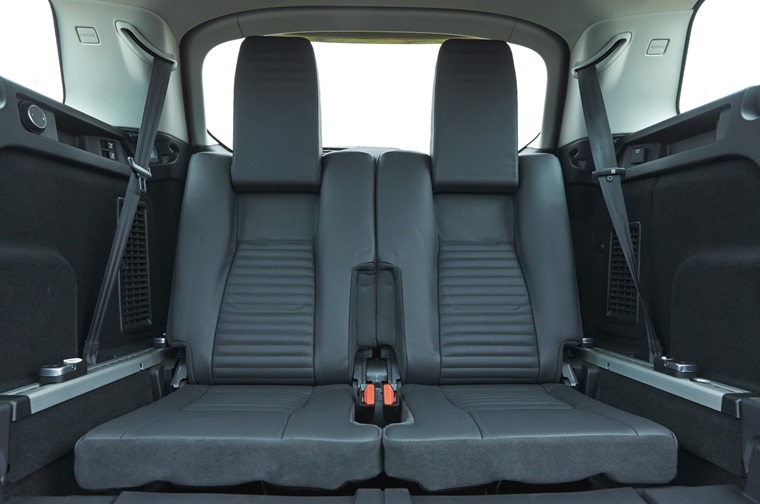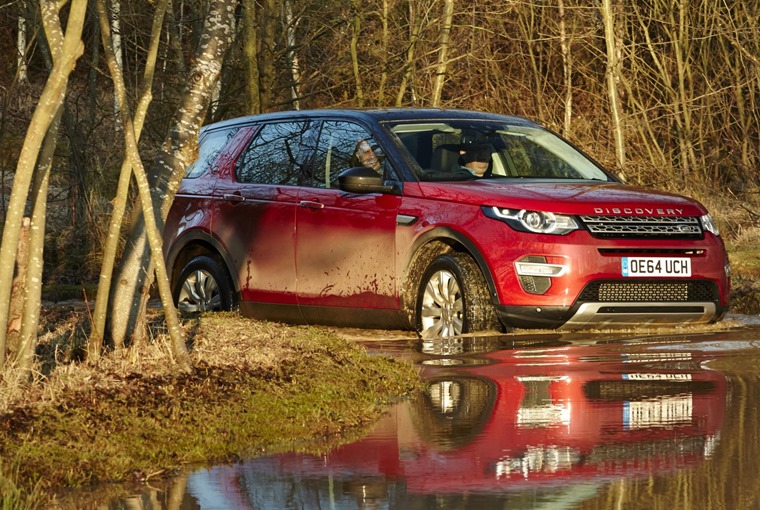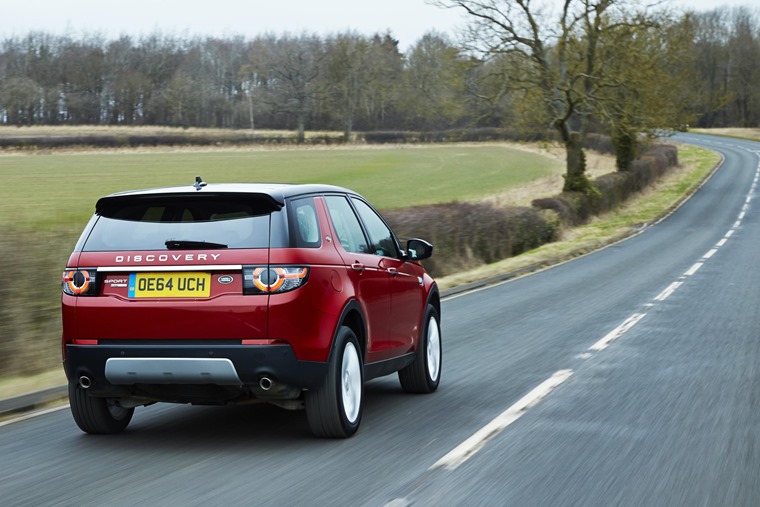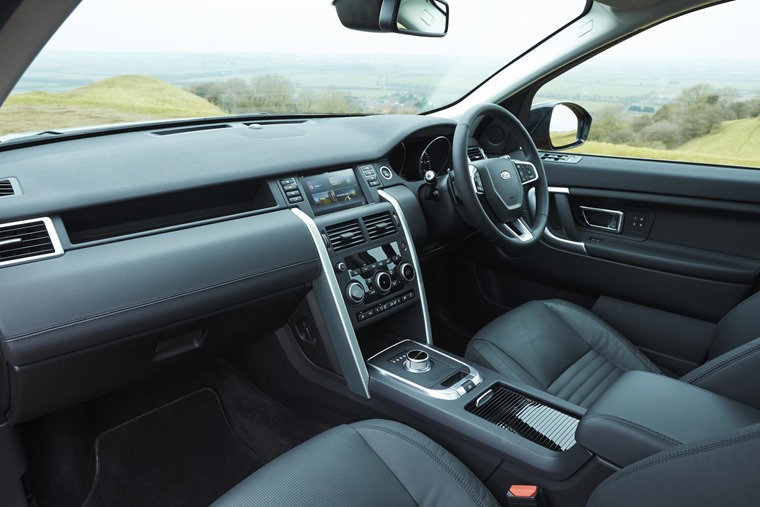Review: Land Rover Discovery Sport 2015
Land Rover has really gone bonkers with this whole ‘family’ idea, and now the Range Rover bloodline has been thoroughly stretched, the Discovery name is next up.
Instead of dreaming up another niche though, Land Rover has effectively built a third-generation Freelander and renamed it Discovery Sport.
Replacing the Freelander is something of a thankless task though, because that car was pretty much king of a segment bristling with competent rivals. So is the Discovery Sport up to the job?
See all our Land Rover Discovery Sport leasing deals here: business / personal
Little family resemblance
First impressions are good, with a fresh exterior that moves away from the boxy Land Rovers of old in much the same way the Evoque reinvented the Range Rover. It’s altogether more curvaceous and fussier than the Freelander, with a rounded shape that carries much of the Evoque’s style. Admittedly, there’s little in the way of family resemblance to the Discovery 4, but as it’s a look that served the ‘baby’ Range Rover so well, there’s logic there.
Inside, you’ll find a cabin familiar to any current Land Rover owner. It pinches elements of both the Evoque and Freelander 2 dashboards, and the rotary gear selector popularised by Jaguar has made its way into the automatic Disco Sports too.
Quality is still slightly down on the Evoque and Discovery, with the odd swathe of hard plastic still to be found below knee level even on higher-spec cars, but it’s an improvement on the Freelander. The new infotainment screen is an especially notable upgrade.
It’s more spacious than the Freelander, too. Peel back the skin and you’ll find the front end is almost identical to the Freelander and the Evoque, but the rear end has been completely redesigned to make the Discovery Sport longer and more capacious.
As a result, there’s space in the huge 981-litre boot for two ‘occasional’ seats. Don’t get too excited about these – adults won’t want to sit in them for long – but you might find some use for them if you have to take a rabble of kids on short-ish jaunts now and then.
It’s very much a 5+2 then, rather than a proper seven-seater, and the boot space suffers greatly with the third row of seats in place. You could get the odd school bag in, but trying to bring the weekly shop home while seven-up might be a bit of a squeeze.

Capable companion
On the road, the Discovery Sport is, as its name might suggest, sportier than the Discovery, and even the Freelander.
Of course, it’s a big 4x4 and everything is relative, so the Focus ST won’t be quaking in its Pirellis, but the Landie isn’t a bad steer. Body roll is noticeable – this is a 1.7-metre-tall car after all – but it’s decently contained and the steering is fairly precise, perhaps thanks to Jaguar know-how. There’s grip aplenty too, so you can make decent progress on a winding road.
Leaving the beaten track shouldn’t worry the Disco Sport too much either, thanks to Land Rover’s commitment to making sure its cars can perform off-road.
The British brand claims the Sport is more capable than both the old Freelander and the Evoque, and that’s substantiated by a 60cm maximum wading depth, 212mm of ground clearance and the auto box’s super-low first gear designed for off-road use only.

It’ll also be a competent motorway companion thanks to the nine-speed automatic keeping the diesel engine up front hushed but still providing enough response to give you a push in the back when necessary.
That isn’t the end of the Sport’s capability though. It’ll tow a 2.2-tonne trailer, which is marginally better than the Ford Kuga’s 2.1 tonnes and the Mitsubishi Outlander’s two-tonne limit, making the Disco the pick of the bunch for caravanners.
Impressive performance
Providing the grunt to haul such a weight is now the 2.0-litre Ingenium diesel engine also seen in the Jaguar XE, but earlier vehicles, including the one we tested, come with the 2.2-litre unit found under the bonnet of the Evoque.
It’s a grumbly, clattery powerplant straight from the old school, and though it’s punchy, the Ingenium engines are much more refined.

Read our review of the Ingenium-engined Jaguar XE 2.0d Portfolio
The newer engines are more efficient too, hitting 57.7mpg in the more efficient 148bhp guise and a still-respectable 53.3mpg for the 178bhp variant.
Considering four-wheel drive is standard, carbon dioxide emissions are pretty low, and the most polluting unit manages 139g/km to peg company car tax at 25%. If you’re really cost-conscious though, the less powerful engine will drop that by 10g/km and cut the tax rate by 2%.
Performance is more impressive, as the 178bhp engine can take the Sport to 60mph in as little as 8.4 seconds and on to a 117mph top speed. Okay, that isn’t quick even by diesel BMW 3 Series standards, but it isn’t bad for a car that weighs in at over 1.85 tonnes.

Reasonable lease rates
That much car doesn’t come cheap though, and prices start from £30,695 for the basic SE model with the 148bhp engine. Move up to the range-topping HSE Luxury and you’ll be looking at £43,000’s worth of Land Rover.
Despite these list prices, lease rates are reasonable. You can pick up base models for less than £275 a month on business deals, and you won’t actually be going without all that much.
You might not get the third row of seats for that money, but you’ll find 18in alloys, part-leather upholstery, climate control, heated front seats and the 8in colour touchscreen all present and correct.

The basic car is probably the best value, but we’d still be tempted by the mid-range HSE, which you’ll probably be able to pick up for another £100 a month. Offering leather seats, a panoramic roof, seven seats, keyless entry, automatic lights and wipers and satellite navigation, it provides you with everything you’ll ever want.
The verdict
Land Rover purists may be up in arms at what they see as a dilution of the Discovery’s good name, but if you forget the name and think of this as a Freelander 3, there’s really very little to complain about. The Freelander 2 was one of the best in the class, and its successor is even better. Job done for Land Rover.
Land Rover Discovery Sport at a glance
Length: 4,599mm
Width: 2,173mm (inc. mirrors)
Height: 1,724mm
Wheelbase: 2,741mm
Boot space: 981 / 1,698 litres
Engines: 2.0d 150 (148bhp), 2.0d 180 (178bhp)
Transmissions: 6-spd manual, 9-spd auto
Cheapest: SE 2.0d 150 (£30,695)
Priciest: HSE Luxury 2.0d 180 Auto (£43,000)
Fastest: SE 2.0d 180 Auto (0-60 8.4s, 117mph)
Greenest: SE 2.0d 150 (57.7mpg, 129g/km)
Average business lease: £429/month (6+35 10k)
Average personal lease: £505/month (6+35 10k)
Key rivals: Audi Q5, BMW X3, Ford Kuga, Mitsubishi Outlander

